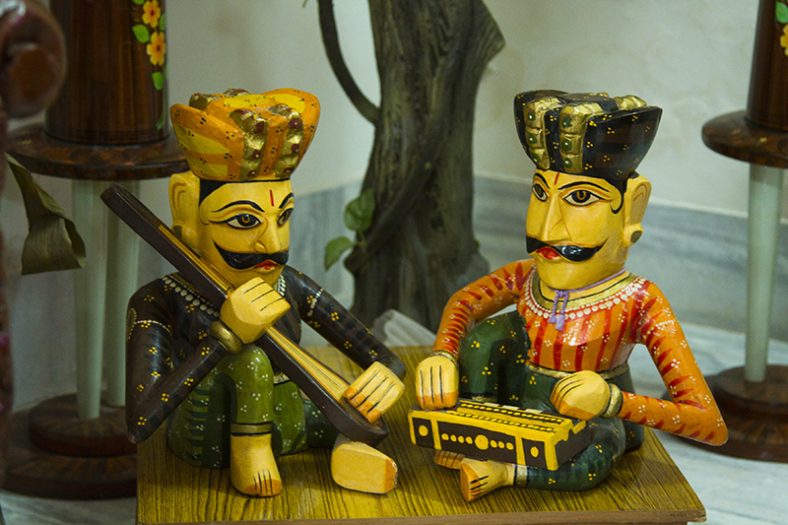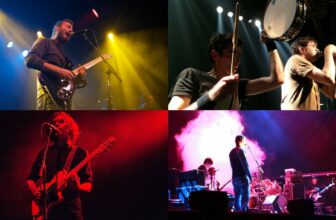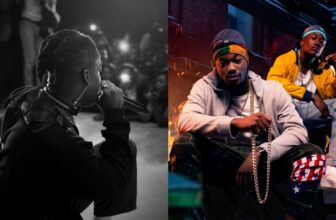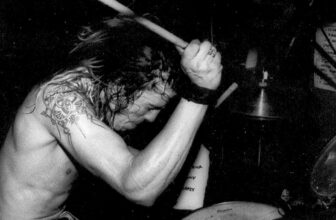A Brief Introduction to Carnatic music

Written by Reema Krishnan.
When we talk about Indian music, many genres or forms of music come to mind – folk music, film music, Indian pop, and Indian classical music. However, these are mainly the forms of India’s own genre – Music of India.
And a significant form, millions of years old Indian classical music is further divided into Hindustani and Carnatic Music – the two forms that evolved as separate genres over the centuries.
Carnatic music is also known as the classical music of southern India. It is said to be originated in Karnataka, hence the name Carnatic music. It displays the use of religious themes, which is credited to the influence of the pan-Indian Bhakti movement in the 15th-16th century. It emphasizes vocal music, which is meant to be performed only in gayaki (singing style).
Carnatic music history says that the swaras (also known as notes in Indian music) were originated from the sounds of birds and animals. And like some other forms of Indian music, the Carnatic compositions are sung in 3 to 7 notes.
It is believed that the Carnatic music of India is the music of deities – devas and devis. Not only does it take you on a journey of rich musical experience, but it is also deeply connected to sentiment. Therefore, each composition brings out the personality of the composer.
You can’t just play or sing the musical notes exactly they are; you must understand the composer and try to create an effect that they intended.
Earlier Carnatic music was taught the traditional way in the gurukala system where the students lived with their gurus (teachers) to learn the art of Carnatic music. But now, with the advancements in technology, students take daily or weekly lessons in online Carnatic music classes such as on Acharyanet.
To have a good start, read on and understand the basics of Carnatic music.
Contents
Important Elements of Carnatic Music
Raga
A raga consists of a set of rules used to create a melody. It specifies if a scale of a note should move up or down, and which note should be used more, used sparingly, or sung with gamaka (a vibration or oscillation of a note).
The sampoorna ragasin Carnatic music consists of all seven notes and are classified in a system called the Melakartaas per the kinds of notes in a composition. In total, there are 72 melakarta ragas.
The ragas are segmented into sets of 6 known as chakras (wheels) based on the scale degrees – median and the supertonic. Moreover, they are segregated in two classes – Janaka ragas and Janyaragas. Janaka ragas are parent ragas or Melakarta, and Janyaragas are the descendant ragas.
Tala
Tala refers to the number of times a beat set will be played or sung in a composition. Every tala has a circle with a fixed number of beats that seldom change in a composition or song.
They have certain components that, when put together, can result in more than 108 combinations, each with a different rhythm. Carnatic singers move their hands in patterns, up, down and in circles, to keep time.
Talas have three main parts, known as laghu, dhrtam, and anudhrtam. And 7 basic groups are formed from these parts, including:
- Rupaka tala
- Matya tala
- Dhruva tala
- Jhampa tala
- Ata tala
- Triputa tala
- Ekatala
Complex talas can have other parts as well, such as guru, plutam, andkaakapaadam.
Compositions in Carnatic Music
There are quite a few types or forms of compositions. Geethams and Swarajatis, the principle compositions, serve as basic learning exercises, and Varnam, Kriti, Javali, Padam, and Thillana are other popular compositions.
The most commonly sung compositions among these are Varnam and Kriti (Keerthanam). Let’s understand them a little more.
Varnam
Varnam highlights which scales and notes in a raga to stress. It’s a way of approaching notes, classical phrases. While there are various types of varnams, they all have in common – an anupallavi, a pallavi, muktayisaras, a chittaswaras, and a charana.
These varnams are usually sung at fast speeds and are hence, kept at the starting of a composition to grab the attention. However, as per good practice, all of these must be sung at various speeds.
Kriti
Kriti, a type of Carnatic song, consists of three units:
- Pallavi – This is denoted as a refrain, repetition of one or two lines in western music.
- Anupallavi – It is the second verse. These are also two lines.
- Charana – This is the verse that wraps the song up.
There are other structures of kritis, which may include chittaswara – a passage that only has notes and no words. This passage is sung right after charana but at high speed.
The Journey of Carnatic Music
Carnatic music has traveled through three periods of time:
The Ancient
During the time between Vedic period and the 4th century AD, Indian classical music was born. This is when the fundamentals of music – Swara, Tala, and Pada – were given by Bharata’s Natyasastra.
The Medieval
This period, between the 5th and 16th century AD, saw Carnatic music progressing. In the 6th century AD, the term raga was born. It was from a Sanskrit text Brihaddesi fashioned by Matanga, a Buddhist monk. Then in the 7th AD, Kudimiyanmalai inscriptions were made that had south Indian musical notes.
In the 12th century AD, a Hindu poet, Jayadev composed Gita Govinda, which consists of 24 songs, each with different sets of ragas. Later in the 15th century AD, more complex and unique verses were introduced in Thiruppugazh, a poetical and musical work of medieval Tamil literature.
The Modern
The modern period consists of the time between the 17th century AD and today. This is the era when Carnatic music became glorified and highly admired across the country. In 1660 AD, Venkatamakhi, an Indian poet and musician, created the Melakarta.
In the 18th century AD, emerged the Three Jewels of Carnatic Music or the Trinity of Carnatic Music – Muthuswami Dikshitar, Tyagaraja, and Syama Sastri. In the 19th century, the breathtaking works of Manikka Mudaliar and Subbarama Dikshitar–Sangeeta Chandrika and Sangeeta Sampradaya Pradarsini – earned acclaim.
The Carnatic music has been improvised and polished almost every century to make it come to a point where the concerts see international visitors.
Learning Carnatic Music
Purandara Dasa, the grandfather of Carnatic music, laid out a system or framework for teaching Carnatic music. It involves graded exercises known as swaravalis and exercises that include the seven talas known as alankaras.
The initial levels also consist of geethams (simple songs) and swarajatis. And once the student achieves a certain standard, varnams and kritis are taught. All of this takes several years before the student is ready to perform in concerts.
The learning structure, more or less, remains the same across the southern regions where Carnatic music is taught; it is arranged in a way that the complexity of the lessons increases gradually.
But the teaching style of the guru is unique everywhere. After all, the musicians’ interpretations of the composers’ visions play a significant role in learning intricate musical details.
Moreover, learning Carnatic music isn’t an easy feat, especially due to the changes after the late twentieth century. Students now also simultaneously build their academic career.
But with technological advancements, they have good access to learning opportunities. Many gurus have platforms where they conduct online Carnatic music classes. These classes are great for students who cannot make weekly class visits to learn Carnatic music.
Carnatic music has made admirable contributions to the music world and gained prestige. If you want to become a Carnatic musician, begin your research and ask for recommendations to find the right guru for yourself. All the best!
Author Bio: Reema Krishnan is a content creator at Acharyanet platform for Carnatic music learners where they can learn music from gurus through 400+ video lessons. Being a music enthusiast and a history buff herself, she is able to provide value for her readers and her content is well-received by musicians, music lovers, and music learners of all ages and at all stages. She loves to volunteer with music therapy groups and bakes up a storm in her free time.





